
Two-Cent Jackson Bank Notes
The Secret Mark and the Vermilion Color
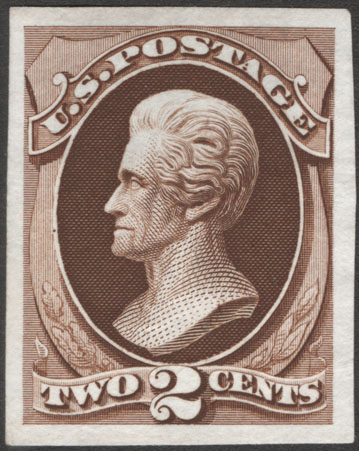
Scott 146P3 - National Printing
No Secret Mark - Proof on India
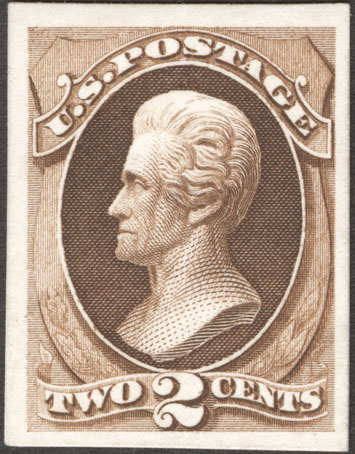
Scott 157P4 - Continental Printing
With Secret Mark - Proof on Card
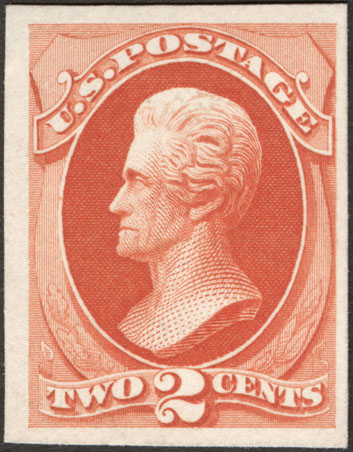
Scott 183P4 - American Printing
Vermilion - Proof on Card
Closeup of the Secret Mark
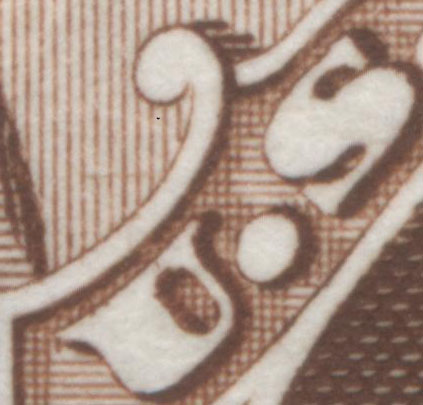
Scott 135 & Scott 146 - No Secret Mark
National Printing - There is a gap where the
scroll ball meets the scroll above "U.S." Swiss Replica Watches
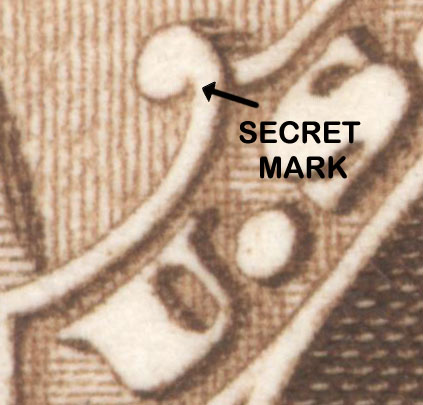
Scott 157 - With Secret mark
Continental Printing - There is a subtle dash of color added
where the scroll ball meets the scroll above "U.S."
Sorting the 2?¢ Jackson Bank Notes By Color

National Printing
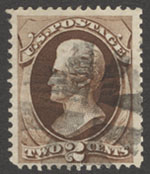
Continental Printing

Continental & American Printing
Illustrated immediately above are the actual stamps supplementing the proofs at the top of the page. This is necessitated by the fact that the proofs were printed several years after the stamps and do not match the issued colors. Although the two-cent stamp die was given a secret mark on the Continental printings, the mark is so subtle it is very easy to miss. Most collectors sort the brown two-cent Jacksons by hue. The reddish browns are assigned as National printings and the solid browns as Continental. That being said, if the stamp clearly has the secret mark it is a Continental, Scott 157, regardless of hue.
If it is a National Bank Note printing and has a grill, it is Scott 135. If it does not have a grill it is Scott 146. Care must be taken when authenticating the grill. Many fake grills have been added over the years in an attempt to increase the value of the stamp. Scott 135 is common enough that it may not be necessary to certify all copies, but nicely centered, fault-free, and particularly unused stamps should be certified.
If the stamp is vermilion you will need to determine the type of paper the stamp was printed on. If it was printed on "hard white" paper it is the Continental printing, Scott 178. If it was printed on "soft porous" paper, it is the American printing, Scott 183. The 2?¢ Vermilion Jackson was not reengraved, so there is only one Scott number assigned for the American printing.
Watch for re-perforation (to fake a more well-centered stamp), for re-gumming (a major problem with the Bank Notes), and even for bleaching of the cancellation (to remove the cancel). Unused copies carry a substantial premium over the used stamp.
The Special Printings are mentioned here merely for completeness. Only 416 copies total of Scott 168 and 193 and only 917 copies total of Scott 180 and 203 were sold, and they were never issued for postal use. All were issued without gum. We occasionally see uncertified copies of these stamps offered for sale at unusually low prices. You can rest assured that the stamp being offered is not genuine. These stamps are so rare, only about 173 copies are known, they rarely come up for sale, except in the sale of a major U.S. Collection





